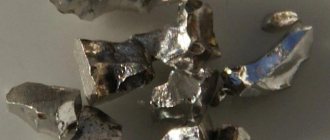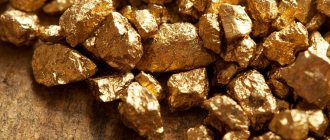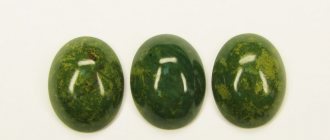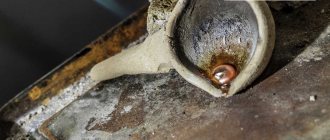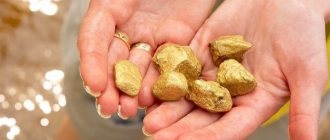Gold in antiquity
Archaeologists around the world still cannot say the year when gold was discovered . Scientists can only speculate about this period. The gold itself and jewelry were found in various places. For example, remnants of the valuable metal were discovered in caves inhabited by people 50,000 years ago. Scientists say that this precious material became most popular in China, India and Egypt. Moreover, most of them believe that the first who mined the first solar metal were the inhabitants of Egypt.
More than 4,000 years ago, the Egyptians became the first to establish gold mining and processing. However, at first the monetary unit in Egypt was barley, and only after some time did gold become equal to money.
By the 7th century before modern times, Egypt possessed more than 3,000 tons of gold, but during the war with the Assyrians it passed to them. About 50 years later it ended up in Babylon, where reserves were increased to 5,000 tons. Egyptian gold began to move from state to state, and its mining was practically stopped.
Methods of obtaining
Modern technologies make it possible to obtain the noble metal by chemical methods. In 1947, physicists from the United States were able to convert mercury into gold. However, this path requires large expenses, so it has no economic significance.
Popular methods of obtaining the substance:
- Flushing. Since the metal has a high density, it can be produced in a stream of water, which washes away impurities from the material. Pre-mined minerals are crushed and then washed. As a result, what remains is a concentrate, which is gold sand of the heavy fraction. Washing has been used since ancient times for the treatment of small placer deposits. Today, this method uses special washing plants and dredges. During washing, specialists monitor not only small, but also large fragments that may turn out to be nuggets.
- Amalgamation. This method was common in Spain in the 16th century. Then the crushed rock was first moistened, then mixed with mercury and further crushed in mills. After this, an amalgam alloy was obtained, which was washed to obtain gold. Later, crushed material began to be passed through special sluices with copper sheets coated with a thin layer of mercury. This method is used only in deposits with a large volume of precious metal. Today it is popular in Africa and South America.
- Cyanidation. In this method, gold is mixed with cyanide in the presence of oxygen. The resulting crushed material is treated with a solution of sodium cyanide, and then the desired substance is precipitated with zinc dust or ion exchange resins. At first, this method was used in large factories in special vats for crushing mined minerals. But with the development of technology, heap leaching was invented: ore is poured onto a waterproof area and irrigated with cyanide solutions. The dissolved substance enters special columns in which it is deposited.
There is a regeneration method. It is carried out using a 10% alkali solution, which acts on solutions of gold salts and then deposits the metal on aluminum from a hot hydroxide solution. To extract the element from sulfide ores, multi-stage technologies with a high degree of purification are used.
Middle Ages and modern times
After the collapse of Rome, all gold reserves were scattered throughout the world, which began to live on these jewels. For about 10 centuries, metal mining was practically not carried out and amounted to only about 3,000 kilograms per year.
By the end of the 15th century, people again began to look for gold deposits, as reserves were no longer sufficient. After the discovery of America, several thousand kilograms of solar metal were exported to European countries over the course of a quarter of a century, and over 200 years the weight of the transported precious metal amounted to more than 2,500,000 kilograms.
, many countries, including Russia, began to actively explore the discovery of gold In most cases, the discovery of new continents occurred thanks to this precious metal. Gold served as the beginning of the discovery and development of new lands and continents.
The most precious gift to humanity was kept in the South American Republic, where gold accumulations weighing more than 65,000 tons were found more than 100 years ago. Most of the solar metal has already been mined in South Africa, but still an average of about 500,000 kilograms of gold per year is still mined from this deposit.
Video: Mystery villa by the lake
Where is pure gold found?
What is pure gold, where is it found and obtained? The chemical element, which occupies seventy-ninth place in the periodic table, is found in nature mainly in a free state.
The largest nugget found on earth was discovered in Australia. He weighed about 112 kilograms. Natural gold usually contains impurities of other metals, most often silver (up to 20%) and copper (also up to 20%), much less often - platinum group metals.
But sometimes compounds of gold with other elements are also found, for example tellurides.
Gold is everywhere - in the earth and water, in wood, leaves, in the blood and tissues of living organisms. The total amount of gold in the seas and oceans is at least 500 million tons, in the earth's crust - more than 100 billion tons!
In bedrock deposits, gold particles ranging in size from microns to millimeters are embedded in solid rocks. When they are destroyed, gold, along with sand and clay, is carried away by water into river beds, where sometimes gold placers are formed, from which gold was mainly mined until the last century.
Gold history of discovery properties and alloys
Currently, most gold is obtained from primary deposits, extracting it from pre-ground hard rocks using cyanide compounds.
This method, which makes it possible to extract gold even from very poor ores, was proposed in 1843 by the Russian engineer and scientist Pyotr Romanovich Bagration. The crushed rock is treated with a dilute solution of sodium cyanide, in which gold dissolves well. The resulting “golden” solution is passed through finely crushed zinc, which releases gold in a free state.
To further purify gold from random impurities, it is treated with hot sulfuric acid or electrolysis is used.
In Russia, gold deposits are located in the Urals and Siberia, Transbaikalia, Yakutia, and Kolyma. Pure gold is a yellow, shiny, soft (drawn with a fingernail), very malleable metal.
Gold history of discovery properties and alloys
Gold and its properties
A piece of gold the size of a match head can be pulled into a wire 3 kilometers long or flattened into a transparent bluish-green sheet with an area of 50 square meters.
Gold is one of the heaviest metals: one cubic centimeter weighs 19.3 grams. At 1063 degrees Celsius, gold melts, and at 2713 ℃ it boils, forming yellow-green heavy steam.
Element No. 79 has exceptional chemical resistance. In air it does not change even with strong heating. Alkalies and acids do not affect it. Only a mixture of hydrochloric and nitric acids—aqua regia and, to a lesser extent, chlorine water—dissolve gold.
Gold enters into chemical reactions with difficulty; the products of these reactions easily decompose - some with slight heating, others spontaneously, and sometimes with the release of energy - an explosion.
Alchemists called gold the king of metals. But, having lost its throne, having ceased to be a treasure, gold will not lose its value - the guarantee of this is its exceptional physical and chemical properties, which make element No. 79 an important technical material.
Table element - gold
Aurum - gold - is one of the elements of the famous table of chemical elements, part of the group of metals. It is very resistant to various aggressive influences. Oxygen has absolutely no effect on this solar metal, so it does not oxidize. This metal is not exposed to various acids if the exposure occurs by one type. At a temperature of +25℃, the metal can dissolve in a mixture of nitric and sulfuric acid. Gold is also quite susceptible to the action of iodine and potassium salt.
Gold catalysis
It is difficult to find another substance in the world that would play such an ominous role in the history of civilization. Raised by human labor to the pedestal of a sovereign measure of value, element No. 79 became a symbol of inhumanity in class society.
Gold history of discovery properties and alloys
To please the “god of gold,” during the Middle Ages, entire nations and the great civilizations that had been created in the Western Hemisphere were completely destroyed. And today millions more people on earth live in the world of the “yellow devil,” which “surrounds a person with its web, drowns him out, sucks blood and brain, devours muscles and nerves...”
But, of course, this element No. 79 in itself is no more guilty of all these atrocities than element No. 92 is to blame for the destruction of Hiroshima.
In pursuit of the precious metal, numerous geographical and other discoveries were made, and the volume of information on the basis of which chemistry subsequently arose was significantly expanded.
For many hundreds of years, alchemists, inspired by the tempting goal of producing the “king of metals” from cheaper and more accessible materials, studied thousands of substances and reactions.
Gold history of discovery properties and alloys
In search of the “philosopher’s stone”, they carried out countless experiments, developed the technique of chemical experiments and, in particular, the separation of mixtures and solutions, and obtained many previously unknown substances - acids, alkalis, salts.
The complete collapse of centuries-old attempts to turn “imperfect” metals into gold led to the establishment of the basic concept of chemistry - the concept of a chemical element.
Healing properties
Even in ancient times, people were convinced that solar metal had healing properties.
- Affects the human nervous system.
- Relieves inflammatory processes.
- Relieves allergic reactions.
- Increases brain activity and endurance.
- Improves memory.
- Improves mood.
- Protects from the evil eye and evil slander.
- Eliminates stress.
Moreover, to get rid of ailments, it is enough to simply wear gold jewelry constantly. Even ancient people believed that gold perfectly prolongs the life of its owner.
What does sample mean?
With the development of industry, many companies have learned to produce high-quality jewelry, which in appearance is practically no different from real gold. An unscrupulous seller will easily sell a “dummy” to a gullible buyer. Therefore, everyone should know how to choose a gold product correctly.
First of all, the quality of this precious metal is determined by its breakdown. Even if the jewelry goes on sale from abroad, a state stamp is placed on it. The most common are products of 585 standard. They contain 58.5% pure gold. 999 fine products are not widely available. But the bars that fill the state gold fund cost 990 fine.
Nature and gold
Unfortunately, gold is not widely distributed on planet Earth, so it has a high value. In the outer earth's crust its content is approximately 4.3·10-7%, and in a liter of water its content is 4·10-9 grams. Also, a small amount of solar metal is present in the soil and feeds the plants.
The method of extracting gold is considered a very labor-intensive process, so at all times it had a fairly high price. Geologists say that gold is a lonely metal, because very often it is found in its pure form.
Video: The riddle of the golden stater
There is an opinion that sake gold itself is one of the least useful metals. Is it so?
An erudite engineer of the early twentieth century would answer: “Undoubtedly, so.” Engineers from the mid-sixties of the twentieth century were not so categorical. The technology of the past did without gold not only because it was too expensive. There was no particular need for properties unique to gold.
However, the statement that these properties were not used at all would be incorrect. Church domes were gilded because of the chemical resistance, high reflectivity, and ease of mechanical processing of gold. Modern technology also uses these properties.
Gold history of discovery properties and alloys
Gold and its alloys
Gold is a very soft metal, it can be easily flattened and turned into the thinnest plates and sheets. In some cases, this is very convenient. Despite this, most gold products are cast.
Melting point of gold: 1063℃. However, even the ancient masters had to make sure that it was not possible to give gold all the necessary shapes by casting. When making a regular jug, the handle had to be cast separately and then soldered.
Historians and archaeologists have found that soldering metals has been known to people for several millennia. Only the ancients soldered not with tin, but with gold, or rather, an alloy of gold and silver. Modern technology also sometimes has to use gold solder.
In terms of electrical conductivity, gold ranks third after silver and copper. When gold comes into contact with copper under pressure in a reducing environment or in a vacuum, the process of diffusion—the penetration of molecules of one metal into another—goes quite quickly.
Gold history of discovery properties and alloys
Parts made of these metals are connected to each other at temperatures significantly lower than the melting point of copper, gold or any of their alloys. Such connections are sealed with “golden seals”. They are used in the manufacture of certain types of radio components.
The strength of “golden seals” is somewhat lower than that of joints obtained by fusion, but is sufficient for radio components. Alloys of gold with silver or copper are used to make the hairs of galvanometers and other instruments, as well as electrical contacts.
These structurally simple parts take on a huge number of short circuits and open circuits. It is especially important that the contacts do not stick, so that they respond to every impulse.
In creating alloys that give the least amount of adhesion, gold plays a special role.
Alloys of gold with palladium (30%) and platinum (10%), palladium (35%) and tungsten (5%), zirconium (3%), manganese (1%) work flawlessly. Special literature describes alloys for special purposes that can compete with gold. This, for example, is an alloy of platinum with 18% iridium, but it is more expensive than any of the above.
The best contact alloys are very expensive, but modern space technology cannot do without them. They are also used in the most important non-spacecraft, which must operate especially reliably.
Application of gold in industry
Gold and its alloys have become a structural material not only for electronic parts and contacts, but also for giant particle accelerators. The accelerator, as a rule, is a huge annular chamber - a pipe rolled into a bagel.
The greater the vacuum that can be created in such a pipe, the longer the life of its elementary particles. The pipe is made of stainless steel melted in a vacuum. Its inner surface is polished to a mirror shine - the polished surface holds vacuum better.
The pressure in the particle accelerator does not exceed billionths of atmospheric pressure! It is unnecessary to explain how difficult it is to maintain a vacuum in such a giant “steering wheel.” This is all the more difficult because the “steering wheel” is only the main contour, in which there are also bends, sleeves, and joints.
O-rings and washers for accelerators are made from soft, malleable gold. The camera joints are soldered with gold. As a result, it is possible to obtain the deepest vacuum in the accelerator. In some cases, the plasticity of gold turns out to be an irreplaceable quality, in others, on the contrary, it creates difficulties.
Gold history of discovery properties and alloys
One of the oldest uses of gold is in dentures. Of course, it is easier to give a soft metal the desired shape, but a tooth made of pure gold will be at least disadvantageous - it will very quickly become wrinkled and worn out.
For the manufacture of dentures and jewelry, not pure gold is used, but its alloys with silver or copper. Depending on the silver content, such alloys differ in color: with 20 - 40% silver the metal is greenish-yellow, with 50% it is pale yellow.
These alloys are further strengthened by heat treatment. Here gold behaves very peculiarly. The process of hardening steel is well known. The metal is heated to a certain temperature and then quickly cooled. This treatment imparts hardness to the steel.
In order to remove the hardening, the metal is reheated and cooled slowly - this is annealing. Alloys of gold with copper and silver, on the contrary, acquire softness and ductility with rapid cooling, and with slow annealing - hardness and brittleness.
Alloys of gold and platinum are sometimes used to make chemical glassware and equipment.
Gilding
Gold coatings have been known since ancient times. If the pharaohs' litters were truly gold, they would be two and a half times heavier than the iron ones. Gold is one of the heaviest metals; only osmium, iridium and platinum exceed it in specific gravity.
An interesting detail: the specific gravity of tungsten is almost the same as the specific gravity of gold. In ancient times, tungsten was not known, but if we assume that the golden crown of the Syracusan king Hieron would have been counterfeited not with silver, but with tungsten, then the great Archimedes, using the law he derived, would not have been able to detect the fakes and convict the fraudulent master.
The pharaohs' stretchers were actually made of wood, covered with the finest gold foil. The thinnest sheets of gold were glued to wood, copper, and later to iron with special varnishes. On items in constant use, such gold plating lasted for about 50 years.
True, this method of gilding was not the only one. In some cases, the product was covered with a layer of special glue and sprinkled with the finest gold powder.
Since the middle of the last century, after the Russian scientist B. S. Jacobi discovered the processes of electroplating and electroplating, the old methods of gilding have almost fallen out of use. The electroplating process is not only more productive, it allows you to give the gold plating different shades.
The addition of a small amount of copper cyanide to the gold electrolyte gives the coating a red tint, and in combination with the addition of silver cyanide, it gives the coating a pink tint; By adding silver cyanide alone, you can get a greenish tint to gold coatings.
Gold coatings are highly durable and reflective. Nowadays, various parts of conductors in high-voltage radio equipment and parts of X-ray machines are gilded. Reflectors are made with gold coating for drying by infrared rays.
The surfaces of several artificial Earth satellites were gold-plated. The goal here was to protect them from the effects of corrosion and excess heat.
The newest method of applying gold coatings is cathode sputtering. An electric discharge in a discharged gas is accompanied by destruction of the cathode. Its particles fly at enormous speed and can be deposited not only on metal, but also on other materials: paper, wood, ceramics, plastic.
This method makes it possible to obtain the finest gold coatings. It is used in the manufacture of photocells, special mirrors and in some other cases.
Gold history of discovery properties and alloys
Paints of gold
The “nobility” of gold extends only to certain limits. In other words, it is possible to obtain its connections with other elements. The industrial process of extracting gold from ores - cyanidation - is based on the interaction of gold with alkali metal cyanides:
4Au+8KCN+2H2O = 4K (Au (CN)2)+4KON
The basis of another important process - chlorination (it is now used not so much for extraction as for refining - gold purification) is the interaction of gold with chlorine.
Sometimes there are ores in which gold is not in a free state, but in combination with tellurium or selenium. Some gold compounds have industrial applications. First of all, it is gold chloride AuCl3, formed by dissolving gold in aqua regia.
Using this compound, high-quality red glass is obtained - golden ruby. It was first made at the end of the 17th century by Johann Kunkel, but a description of the method for its production appeared only in 1836.
A solution of gold chloride is added to the mixture during the cooking process, and by changing the dosage, different shades of glass are obtained from soft pink to dark purple. The best colors for glass are those that contain lead oxide. True, in this case, another component has to be introduced into the charge - a clarifier: 0.3 - 1.0% “white arsenic” As2O3.
Coloring glass with gold compounds is not very expensive - for uniform, intense coloring of the entire mass, only 0.001 - 0.003% AuCl3 is needed. You can also give glass a red color by introducing copper or selenium compounds into the charge. They are certainly cheaper than gold compounds, but working with them and obtaining high-quality products is much more difficult.
The production of “copper ruby” is complicated by the variability of color; the shade greatly depends on the cooking conditions.
In the production of “selenium ruby,” difficulties arise from the burnout of selenium and sulfur from cadmium sulfide, which is also introduced into the charge.
“Golden Ruby” does not lose its bloom during high-temperature treatment. Its undeniable advantage is that unsuccessful cooking in this case can be corrected by subsequent remelting.
As a coloring agent, gold chloride is also used when painting on glass and porcelain. In addition, it has long been used as a toning agent in photography. “Gold Fixer” gives photo prints black-violet, brown or purple-violet shades.
For the same purposes, another gold compound is sometimes used - sodium chloraurate NaAuCl4.
Gold history of discovery properties and alloys
Gold in medicine
The first attempts to use gold for medicinal purposes date back to the times of alchemy. They were little more successful than the search for the philosopher's stone. In the 16th century, Paracelsus tried to use gold preparations to treat certain diseases, in particular syphilis.
“The transformation of metals into gold should not be the goal of chemistry, but the preparation of medicines,” he wrote. Much later, compounds containing gold were proposed as a medicine against tuberculosis.
It would be wrong to assume that this proposal was without foundation: in vitro, that is, outside the body, “in a test tube,” these salts had a detrimental effect on the tuberculosis bacillus, but to effectively combat the disease, fairly high concentrations of these salts are needed.
Nowadays, gold salts are important for the fight against tuberculosis only insofar as they increase resistance to the disease.
It was also found that gold chloride in concentrations of 1:30,000 begins to inhibit alcoholic fermentation, when the concentration increases to 1:3000 it significantly inhibits it, and in a concentration of 1:200 it completely stops.
A more effective medical remedy turned out to be gold and sodium thiosulfate AuNaS2O3, which is successfully used to treat a difficult-to-treat skin disease - erythematous lupus.
Organic gold compounds, primarily crizolgan and triphal, were not used in medicine.
Gold history of discovery properties and alloys
At one time in the middle of the 20th century, Krizolgan was widely used in Europe to combat tuberculosis, triphal - as a less toxic and more effective medicine for erythematous lupus than gold and sodium thiosulfate.
The highly active drug krizanol was synthesized in the Soviet Union:
(Au - S - CH2 - CHOH - CH2SO3 )2Ca - for the treatment of lupus and bone tuberculosis. After the discovery of radioactive isotopes of gold, its role in medicine increased significantly.
Colloidal particles of these isotopes are used to treat malignant tumors. These particles are physiologically inert, and therefore it is not necessary to remove them from the body. Injected into specific areas of the tumor, they irradiate only the affected areas.
Radioactive gold can cure some forms of cancer. A special “radioactive pistol” has been created, the clip of which contains 15 rods of radioactive gold with a half-life of 2.7 days. Practice has shown that treatment with “radioactive needles” makes it possible to eliminate a superficial breast tumor already on the 25th day.
Gold history of discovery properties and alloys
Gold catalysis
Radioactive gold has found application not only in medicine. Opportunities have arisen to use it as a catalyst in several important petrochemical and chemical processes instead of platinum.
Particularly interesting are the prospects for using the catalytic properties of gold in the field of high-speed flights. It is known that at an altitude of 80 kilometers and above there is quite a lot of atomic oxygen in the atmosphere.
The combination of individual oxygen atoms into an O2 molecule is accompanied by the release of a large amount of heat. Gold catalytically accelerates this process.
It is very difficult to imagine an ultra-high-speed aircraft that operates practically without fuel, but theoretically such a design is possible. The engine will work thanks to the energy released during the dimerization reaction of atomic oxygen.
Having risen to an altitude of 80 kilometers (this is significantly higher than the ceiling of modern aircraft), the pilot turns on the oxygen-catalytic engine, in which atmospheric oxygen comes into contact with the catalyst.
satellite with a gold plate. Message to Civilizations on a Gold Plate
Of course, it is still difficult to judge the characteristics of such an engine, but the idea is very interesting and apparently not fruitless. On the pages of scientific journals, foreign experts discussed possible designs of the catalytic chamber and proved the inappropriateness of using a finely dispersed catalyst.
All this indicates the seriousness of intentions. In the meantime, such engines will be used not on airplanes, but on rockets, and perhaps further research will bury this idea as impracticable.
But this fact, like everything discussed above, shows that the time has come to abandon the established view of gold as a metal useless for technology.
The largest gold mining companies in Russia
The results of 2021 ranked the leading Russian gold miners in the following order:
- 1st place – PJSC Polyus.
- 2nd place – Polymetal Group of Companies.
- 3rd place – KinrossGold.
- 4th place – Petropavlovsk Group of Companies.
- 5th place – Nordgold Group of Companies.
- 6th place – JSC Yuzhuralzoloto GC.
- 7th place – HighlandGold.
- 8th place – PJSC “Vysochaishy” (GV Gold).
- 9th place – JSC “Pavlik”.
- 10th place – PJSC Seligdar.
- 11th place – PJSC Susumanzoloto.
- 12th place – GRK Bystrinskoye (Norilsk Nickel).
- 13th place – JSC “Gold of Kamchatka”.
- 14th place – JSC “Priisk Solovyovsky”.
- 15th place – Sibzoloto Holding.
- 16th place – JSC GRK “Zapadnaya”.
- 17th place – Arbat Concern.
- 18th place – “Artel of Prospectors Vitim”.
- 19th place – JSC Okhotsk Mining and Gas Concentrating Company.
Application
The world's current gold distribution is as follows: about 10% is in industrial production, the rest is divided approximately equally between centralized reserves (mostly in the form of standard chemically pure gold bullion), privately owned bullion, and jewelry.
In industry
In terms of its chemical resistance and mechanical strength, gold is inferior to most platinum group metals, but is an indispensable material for electrical contacts. For this reason, gold conductors and electroplating of gold contact surfaces, connectors, and printed circuit boards are very often used in microelectronics.
Gold is used as a target in nuclear research, as a coating for mirrors operating in the far infrared range, and as a special shell in a neutron bomb.
Gold solder is very suitable for wetting various metal surfaces and is used in metal soldering. Thin soft gold alloy seals are used in ultra-high vacuum technology.
Metal gilding is widely used as a method of protection against corrosion (in ancient times it was exclusively the amalgam method, today it is mainly galvanic). Although this coating of non-ferrous metals has significant disadvantages (soft coating, high potential for pitting), it is also common since the final product is in the form of very expensive “gold”.
Gold is registered as a food additive E175.
What does the color tell you?
Gold items of the same standard may differ in color. The appearance of the finished item depends on the impurities. Platinum and nickel give the alloy a light tint. Copper and cobalt produce dark-colored jewelry.
Rose gold is extremely popular today. This alloy is obtained by adding silver and copper. But exclusive black gold is created using cobalt and chromium. In many cases, consumers overpay for fashion trends. In this case, the gold content in the product may be minimal. In just a few years, the jewelry may lose value. Therefore, preference should still be given to the classic yellow metal.
